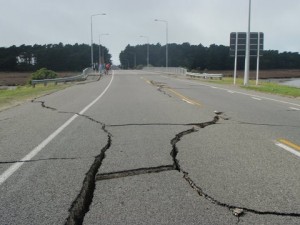Home » Environment Assignment 3, design for a catastrophe, the question asks: What is the prediction for future catastrophes, is your home in an at-risk area?
Assignment 3, design for a catastrophe, the question asks: What is the prediction for future catastrophes, is your home in an at-risk area?
Permaculture in a Catastrophe
Submitted by
on September 9, 2010 – 4:42 pm 2 Comments
 Assignment 3, design for a catastrophe, the question asks: What is the prediction for future catastrophes, is your home in an at-risk area?
Assignment 3, design for a catastrophe, the question asks: What is the prediction for future catastrophes, is your home in an at-risk area?Unfortunately, there is no method for predicting any of these catastrophies. We can only plan for their possibility and be prepared for any outcome. Our home is in an at-risk area for earthquakes (and subsequent threat of liquifaction), tsunami and flooding.
The second question asks- What can you do/have done to minimise the risks for loss of life and property?
This is the $2billion dollar question.
In a week that started with a jolt, that has seen us up, naked, under door-ways more nights than not; a week that has been punctuated with earthquakes- perceived and real, what could we have done that would have minimised the risk of loss of property?
What a lucky week we’ve had! In fact, I think my luck started a few days earlier with the power cut- My partner and I joked about the romance of nappy changing by candle-light while we toasted our futures; a few days later, sheltering under a door-frame we were grateful to the power cut and our newborn baby for making us get the torch out earlier and not having the energy to put it away again. Before the lights had finished swinging we were able to put our hands to our camping-lights.
It took 2 days for the power be reconnected, but as luck would have it we have gas in the kitchen and so could still make our coffee once the sun came up.
Luck also had us organise ourselves a year earlier. After a similar sized earthquake, centred hundreds of kilometres further south, had the dishes swinging in the sink, my destabilised French man, (it was his very first earthquake) asked the very question: what can we do?
We got prepared.
I boiled and bottled enough water for 3 people for 3 days and stashed it in a number of places. We bought candles, matches, canned goodies and UHT milk; we didn’t buy chocolate (no amount of planning can account for how much chocolate would be needed in an emergency).
The Lady had us installed in an amazing community with neighbours who knock on your door to see if you’re alright, neighbours who make offers of coffee on earthquake-fresh mornings, neighbours who put up signs advertising well water for everyone to share and neighbours who organise portaloos for the whole street.
This week we’ve shared showers and washing machines, meals and conversations over fences. We’ve re-introduced ourselves to people we’d barely spoken to and exchanged phone numbers. What an earthquake damaged we rebuilt and strengthened with our community resilience. There are many folk throughout the city who probably think themselves even luckier than us- perhaps they’ve been made homeless but reminded that in fact, what they lost is replaceable- it was only stuff; their people- whanau and community are still here!
In our busy week probably not many of us have considered permaculture design as a possibility to help ourselves out in the future, but we should. It’s not just about growing veges, it’s about designing systems using low impact techniques like hygienic compost toilet design and greywater recycling, low energy devices like rocket stoves and solar cookers.
But it’s also about creating resilient communities.
GD Star Rating
loading...
loading...
GD Star Rating
loading...
loading...
Tags: emergency, Permaculture



Thanks for your words Rebecca, sending you a collective Happyzine eye brow raise of love and support.
xxoo
loading...
loading...
The even worse earthquake 5 months later seems to have overshadowed this quake but it did make thousands of people get prepared for an emergency. It’s 3 years later as I write this comment and many people in Christchurch are still suffering. Thanks for this post explaining how everyone pulled together.
loading...
loading...